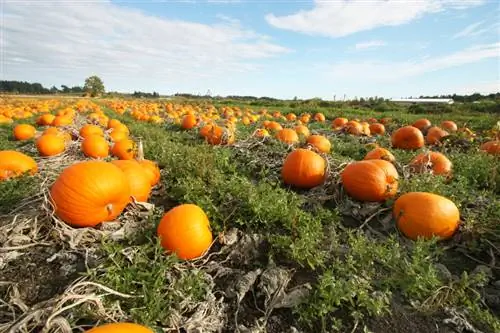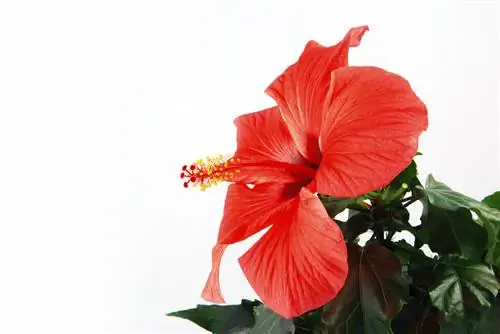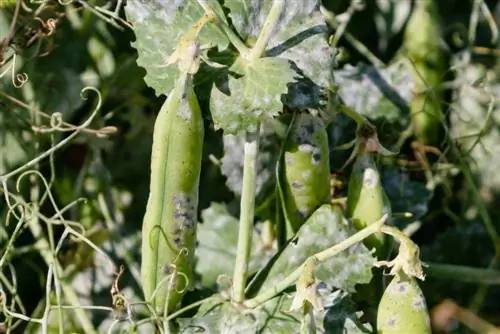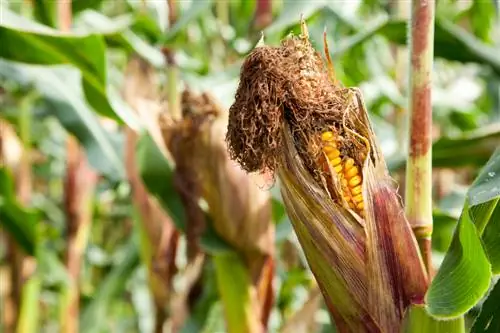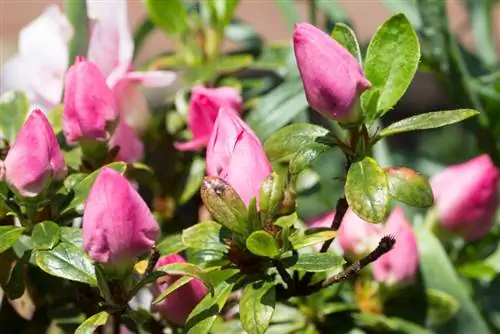- Author admin [email protected].
- Public 2023-12-16 16:46.
- Last modified 2025-01-23 11:19.
Unfortunately, a magnificently growing pumpkin offers a considerable target area for diseases and pests. This is how you effectively ward off attacks from fungi and voracious pests.
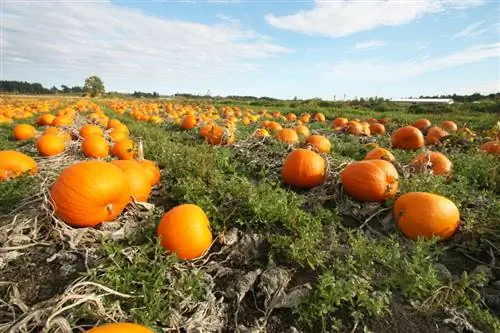
How to protect pumpkins from diseases and pests?
To effectively protect pumpkins from diseases and pests, you should pay attention to dry, airy locations, harden the plants, avoid injuries, use little nitrogen fertilizer and spray baking soda solution for mildew. Barriers such as snail fences, beer traps, coarse-grain sand or coffee grounds help against slugs.
These mushrooms want to destroy the pumpkin
The focus is on two fungi that target pumpkins during the growing season. Both have their peak season exactly parallel to the plants. We explain how to recognize and combat the symptoms.
The fungus Didymella bryoniae causes rubber stem disease, also known as stem blight. In summer temperatures it attacks the pumpkin and penetrates the plant through the smallest injuries. Leaf spots and black necrosis form. At the same time, the stems become rubbery.
- Cultivation in locations that are as dry and airy as possible
- harden off for 1 week before planting
- avoid any injury to the shell
- Administer only a small amount of nitrogen fertilizer
- In extreme emergencies, treat with Compo Duaxo fungus-free, with the approved active ingredient difenoconazole
If a whitish fungus appears on the leaves, powdery mildew has struck. Take the initiative immediately and spray the diseased plant repeatedly with the following mixture: 1 heaped spoonful of baking soda (soda), 15 milliliters each of vegetable oil and pure curd soap.
Repel insatiable slugs
They move out at night and attack pumpkin plants with great appetite. We're talking about the ubiquitous slugs. With a good dose of persistence you can get rid of the plague:
- create moving barriers around each plant made of wood chips, grit or coarse-grained sand
- Changing a pumpkin with a snail fence
- Coffee grounds have a highly toxic effect on molluscs
- Settling Indian runner ducks or chickens in the garden
- Attract predators, such as birds or hedgehogs
The combination of a snail fence and a beer trap has proven to be extremely effective. Place a bowl filled with old beer within the fenced area throughout the season. Snails cannot resist this temptation. They fall in and drown.
A beer trap without a snail fence is strongly discouraged at this point. The snails from all over the neighborhood will arrive in droves.
Tips & Tricks
If there is a threat of a rainy summer, the infestation pressure from fungal diseases and moisture-loving pests of all kinds increases disproportionately. In this case, protect your magnificent pumpkin with a simple superstructure, as is known from tomato cultivation.

